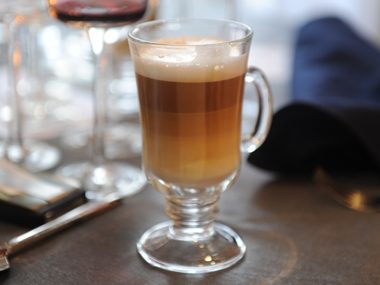
The food looks delicious, but you’d never want to eat it
Most everything has been manipulated by the food stylist to appeal to the consumer, but nothing is what it seems. A cappuccino is painstakingly built with piped soap foam “bubbles” that stay round. Tea, coffee, soft drinks, and even milk are prepped the same way. (By the way, here are some secrets fast food workers won’t tell you.)
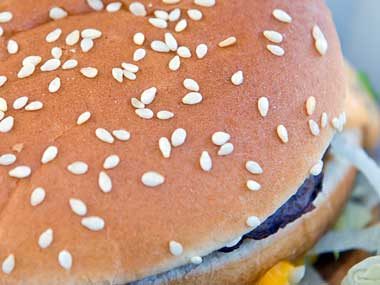
It takes a lot of rejects before a “hero” emerges
For this shoot, a food stylist probably had to go through dozens and dozens of buns to find a “hero”—the perfect example. Often, stylists need multiples in case something happens to the hero during the shoot. Those seeds are also “heroes” too, and are meticulously glued on top with tweezers to fill in any flaws.
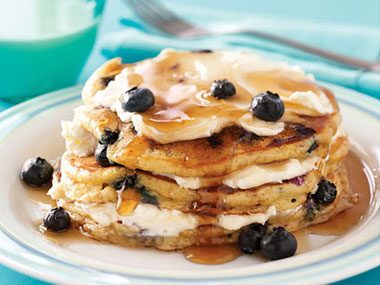
Cut into a stack of pancakes and you’re likely to hit cardboard
Stacked food like pancakes or burgers often are perked up with cardboard support in between the layers; the griddlecakes can then be sprayed with water-repellent Scotch Guard so the syrup easily glides over the edge. (Don’t miss these surprising things your restaurant server isn’t telling you.)
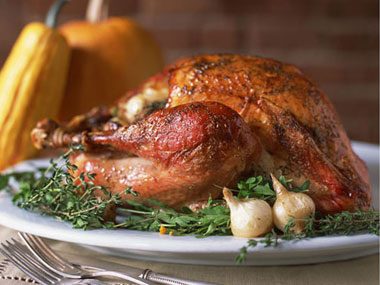
That glistening bird? It’s raw inside
Whole turkeys are first sprayed—usually with a browning sauce, water, and food coloring—and then blowtorched till they gleam the perfect color. But inside, they’re uncooked, since no mouth is going to go near them after that process. Some are also stuffed with paper towels to plump them up further. Although this may be disappointing, you could make a funny turkey joke out of it.
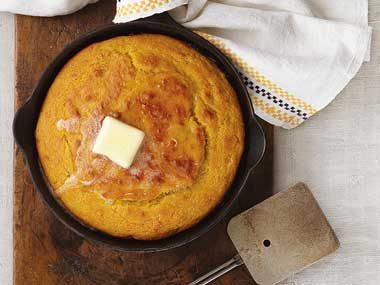
This ‘melting’ butter? Likely it was shot on cold food
To get the pat to convincingly “melt,” a food stylist probably used a portable steamer or a heated painter’s spatula, depending on the desired effect.
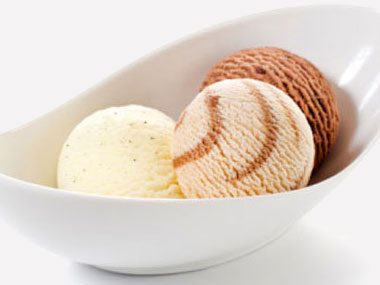
Looks like ice cream? Tastes like lard
Unless you are advertising a particular brand, generic ice cream is typically made from fat and powdered sugar and colored to simulate different flavors. A food stylist might also fake ice cream by combining canned frosting with confectioners sugar: it scoops perfectly and stays camera-ready for hours. (You won’t want to miss these things your grocer won’t ever tell you.)
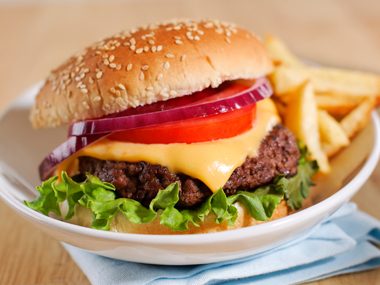
Yuck: Melted cheese is actually simmered cheese
Food stylists heat up a little water and gently dip cheese in it for a couple of seconds before laying it on, say, a (probably cold) burger to achieve that dripping, gooey look.
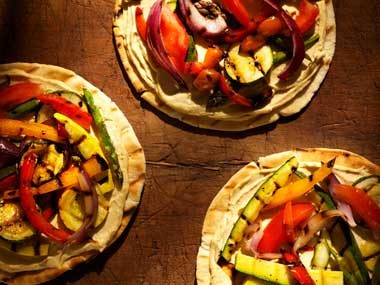
Perfect grill marks are usually manufactured one at a time
Some stylists use a paint stripper, while others heat up individual metal skewers so they can place evenly spaced char lines on the food. (If you’ve ever wondered what secret ingredient makes McDonald’s fries so tasty, we finally have an answer.)
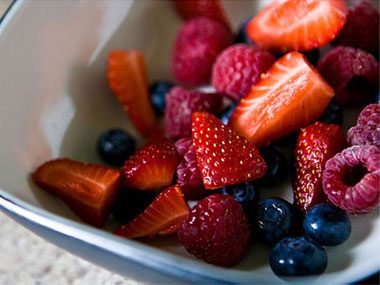
Magically, cut fruit never browns
It’s often put in a cold-water bath with a sprinkle of a product called “Fruit Fresh,” which can be found at most grocery stores. Some food stylists add lemon juice to water for a similar effect. To redden berries, a food stylist might use lipstick to cover any white spots.
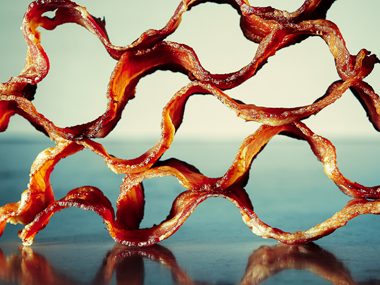
Here’s why the bacon looks so good:
To get the perfectly curled effect, food stylists weave the strips over and under tubes in the oven or they drape them over squished aluminum foil. Highlights created by spritzing oil on the finished product make it look less dry and more mouthwatering.
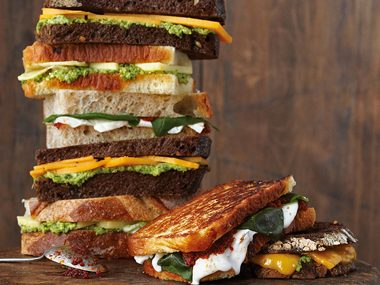
Sandwiches don’t usually stay together
They’re built layer by layer, with toothpicks holding each level in place. Larger stacks are held together with skewers.
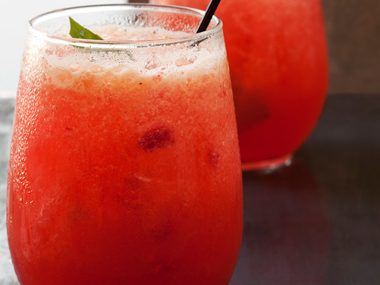
Water may be cheap, but ice cubes are expensive
Because ice would melt under hot lights, a food stylist uses carved plastic blocks that can cost up to $50 each. The drinks are also likely fake, made from granulated gel squeezed into water. Even the condensation on the glass could be a mix of corn syrup and water, sprayed on. (These restaurant secrets the kitchen crew won’t ever tell you are shocking.)
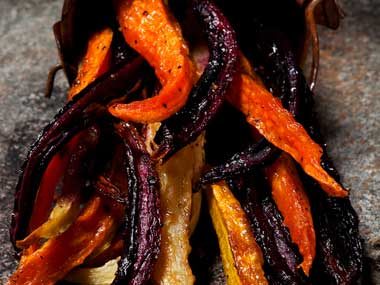
Many glazes are just simply oil
A food stylist will spray oil on the product to get a gorgeous, glistening effect, as shown here on colorful roasted carrots.
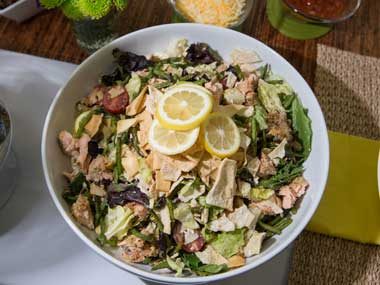
For the freshest look, salads get spritzed
After putting a salad out, a food stylist will keep a spray bottle of water nearby and use it to keep the greens crisp. (You won’t believe these sickening secrets of how processed food is made.)
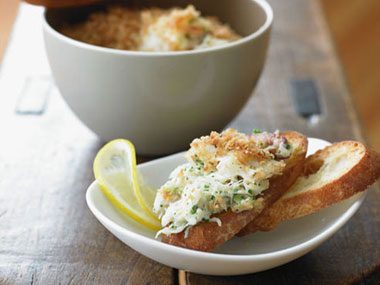
White plates show off most food best
Then consumers can really see the richness and beauty of the food without distraction.
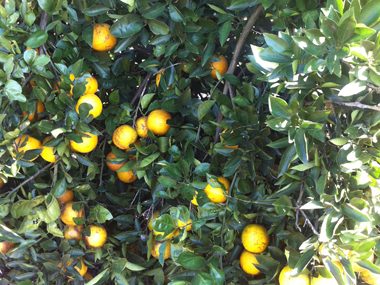
Sometimes nature gets styled, too
One food stylist arrived at a Sarasota, Florida grove at 4 a.m. for a shoot only to discover the trees did not have enough fruit for the shot. “Armed with a needle and thread, I proceeded to sew oranges to the branches to make it look bountiful. Totally fake!”
Sources: Janice Stahl, ALDI food stylist; Sarah T. Greenberg; Ceci Loebl; Mariana Velasquez; Big Leo Productions.